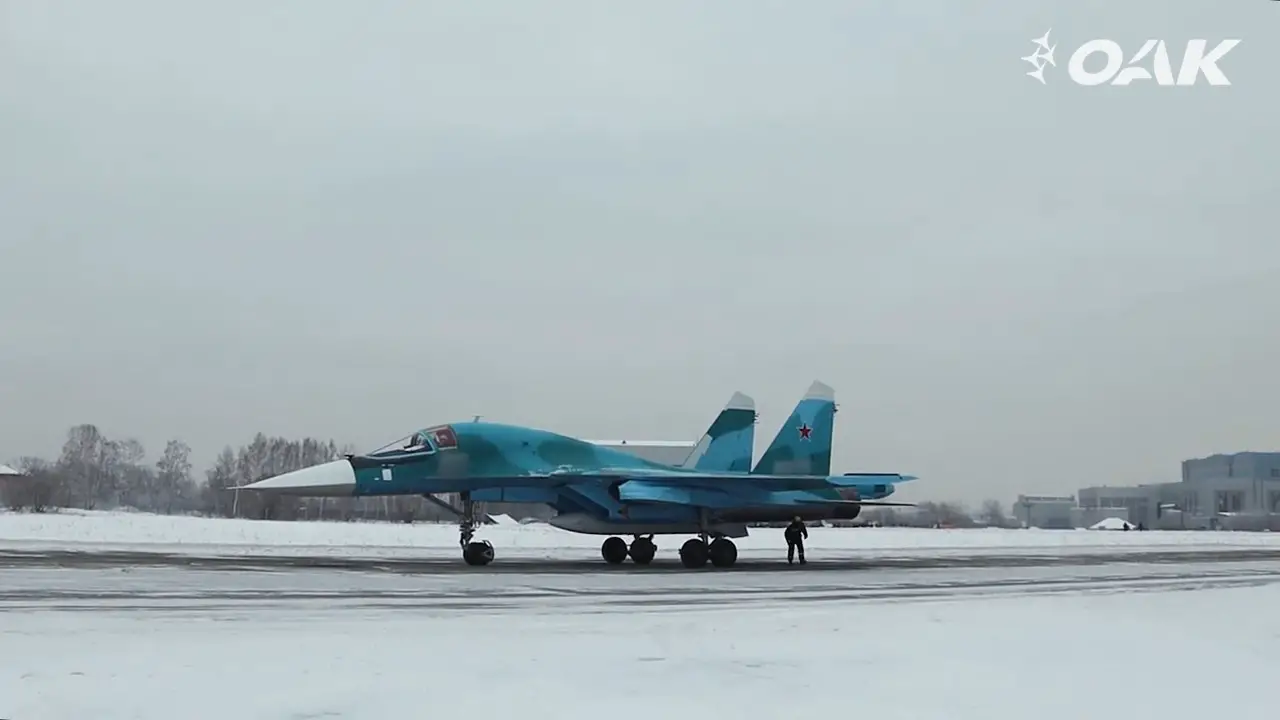PJSC Sukhoi Company (as part of PJSC United Aircraft Corporation) has completed another long-term contract for the supply of a batch of Sukhoi Su-34 fighter-bombers to the Russian Ministry of Defense. An initial batch of eight aircraft was completed by the Novosibirsk factory in 2004. In March 2006, Russia’s Minister of Defence Sergei Ivanov announced the purchase of the first five pre-production Su-34s for the Russian Air Force. In late 2008, a second contract was signed for delivery of 32 aircraft by 2015. A total of 70 aircraft were to be purchased by 2015 to replace some 300 Su-24s in service at the time, which were then undergoing a modernization program. Delivery came in the form of two contracts, the first in 2008 for 32 aircraft and the second in 2012 for a further 92 aircraft, totaling 124 to be delivered by 2020.
According to Scramble.nl, two additional aircraft have red side numbers “12” and “19”. Both of them, apparently, entered the 968th separate mixed aviation regiment of the 4th State Center for Aviation Personnel Training and Military Testing of the V.P. Chkalov Ministry of Defense of Russia in Lipetsk. The Ministry of Defense of the Russian Federation thus received two additional front-line Su-34 bombers manufactured by the Novosibirsk Aviation Plant (NAZ, a branch of PJSC Sukhoi Company) as an addition to the contract dated February 2012 for the supply of 92 Su-34 aircraft. JSC Novosibirsk Aircraft Production Association Plant named after V.P. Chkalov (NAPO) is one of the largest aerospace manufacturers in Russia. The company produces Su-34 fighter-bombers and also conducts repair and upgrade work on Su-24M frontline bombers. It is also involved in the Sukhoi Superjet 100 program, where it is one of the two main production sites.

The Sukhoi Su-34 (NATO reporting name: Fullback) is a Soviet-origin Russian twin-engine, twin-seat, all-weather supersonic medium-range fighter-bomber/strike aircraft. It first flew in 1990, intended for the Soviet Air Forces, and it entered service in 2014 with the Russian Air Force. Based on the Sukhoi Su-27 Flanker air superiority fighter, the Su-34 has an armored cockpit for side-by-side seating of its two-person crew. The Su-34 is designed primarily for tactical deployment against ground and naval targets on solo and group missions in daytime and at night, under favourable and adverse weather conditions and in a hostile environment with counter-fire and electronic Warfare (EW) counter-measures deployed, as well as for aerial reconnaissance. The Su-34 will eventually replace the Su-24 tactical strike fighter and the Tu-22M3 long-distance bomber.
The Su-34 shares most of its wing structure, tail, and engine nacelles with the Su-27/Su-30, with canards like the Su-30MKI, Su-33, and Su-27M/35 to increase static instability and to reduce trim drag. It has twin tail fins like those of Su-27 from which it is derived. The Su-34 has 12 hardpoints for 8,000 kg (17,600 lb) of ordnance, intended to include the latest Russian precision-guided weapons. It retains the Su-27/Su-30’s 30 mm GSh-30-1 cannon, and the ability to carry R-77 air-to-air missiles (6 pcs) and R-73 (also 6), with the air-to-air missiles being primarily for defense against pursuers if detected by the rearward facing radar. The maximum weight of any single munition carried is 4000 kg, its stand-off weapons have range up to 250 kilometres (160 mi). A Khibiny electronic countermeasures (ECM) system is fitted as standard.













